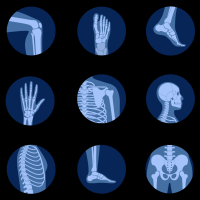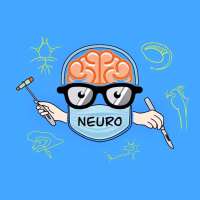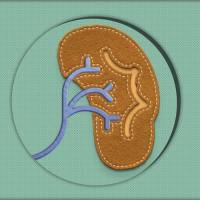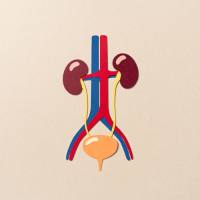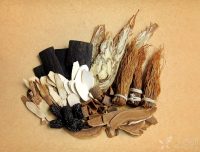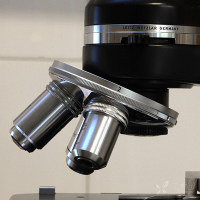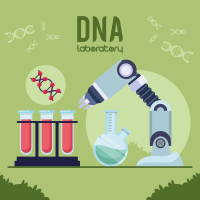【bio-news】基因组为何支离破碎
Why Genomes in Pieces?
Laura F. Landweber
Some microorganisms are evolutionary puzzles in that their genomes contain encrypted genes that are descrambled into gene products.
Microbial eukaryotes take ample detours along the route from DNA to messenger RNA (mRNA) and protein.Some of their tricks continue to erode the notion of a gene beyond its natural subdivision into functional exons and noncoding introns . Two discontinuous genetic systems described in this issue further challenge this dogma. On page 415 of this issue, Marande and Burger report a fully scrambled mitochondrial genome in Diplonema papillatum, a free-living relative of disease-causing trypanosomes , and on page 450, Soma et al. describe a set of scrambled transfer RNA (tRNA) genes in the nuclear genome of the red alga Cyanidioschyzon merolae . The findings are reminders that a genome sequence can be a far cry from knowledge of gene products.
Marande and Burger explode the notion of a gene with mRNA building blocks present as “modules” of ~165 base pairs, each on a sepa separate chromosome in the mitochondria of the protist D. papillatum. Construction of a complete mRNA requires joining up to nine modules through a mechanism that appears distinct from known forms of RNA splicing, the processes that join exons in eukaryotic mRNA. Although split genes occur in other systems (including Chlamydomonas, Euglena, Alveolata, plants, and Diptera), rarely are the scrambled pieces “sewn” back together to create a contiguous gene or RNA. Some exceptions are gene unscrambling in ciliates and the bursicon gene in mosquitoes . Transsplicing of RNA and even proteins can also merge functional regions located on dispersed elements of prokaryotic or eukaryotic genomes.
The pathway for gene assembly in diplonemid mitochondria may provide a clue to the origin of U-insertional RNA editing, which makes a modest appearance in the report by Marande and Burger as six non–DNA-encoded uracil (U) residues that join two RNA modules. Perhaps the ancestral role of guide RNAs that direct U insertion and deletion in the related kinetoplastid protozoa was to provide a template scaffold to link modules. Such small antisense RNAs may later have gained a role in RNA editing, possibly under selective pressure to repair a region or restore a reading frame after loss or erosion of a module.
Soma et al. describe a new layer of tRNA processing in the red alga C. merolae: circularly permuted tRNAs, with the coding region for the RNA 3' end located upstream of the coding region for its 5' end. Although circular permutation has been a laboratory tool for the study of RNA structure and function for years, true biological occurrences were previously known only in phage and ciliate mitochondria . Maturation of tRNA is an elaborate RNA- and protein-driven cascade of clipping, coiffing, and adorning an initial RNA transcript . Soma et al. add one more decryption step to this assembly line.
Why do quirky genetic architectures emerge and persist? Some genetic systems may provide a source of evolutionary novelty. For example, module recycling or shuffling could generate new gene products without destroying the old ones or requiring duplication . So far, the gene products in D. papillatum seem conventional, but examination of the mitochondrial proteome may tell otherwise Some genetic systems may be molecular fossils— neutral vestiges of the past without any special benefits. It is parsimonious to assume that the earliest organisms had split genes, for instance , but because all extant life has been evolving for the same length of time from a common ancestor, one cannot infer the preservation of ancestral genome organization without detailed mapping of ancestral and derived characters on a reliable phylogeny.
Another possible explanation for rococo genetic systems is atavism, in which some biological mechanisms revert back to an ancestral state, although presumably with modification, in a new, derived genetic background. Some of these events may appear to recapitulate features of primitive genomes,providing indirect clues as to how early genetic systems could have functioned.
There is also pure chance, a scenario that is probably slightly deleterious. Unconstrained by dogma and size, why shouldn’t microbial life explore a broad range of possibilities? Protists, often reproducing asexually in the wild, would gradually accumulate small mutations and genome rearrangements that would be crippling without a mechanism to mitigate the effect. Acquisition of a new mechanism may be successful if the organism can recruit a preexisting cellular function or template for repair or rearrangement and then elaborate on the basic mechanism, leading to fixation and expansion of a complex genetic system.
Reductive evolution could account for the svelte genome size (16.5 Mb) of C. merolae and perhaps even some of its quirky genome architecture, if a few spandrels arose as byproducts of genome compaction. This is consistent with its recent placement as a derived lineage within an outgroup of red algae . Genome reduction may lead to intrachromosome rearrangement or overlapping genes in related protists , as either a consequence of, or adaptation to, small size. Germ-line rearrangements can also yield gene duplications .which would be trimmed back under the sword of reductive evolution. Thus, the model that Soma et al. propose for the origin of a permuted tRNA gene is feasible, albeit via secondary acquisition: tRNA gene duplications could emerge along with other germ-line rearrangements, and then the 5' end of the upstream gene would be lost, as well as the 3' end of a downstream gene, leaving the organism no choice but to exploit such a resulting permuted gene, if it can. The only option would be to rescue it by adding a few more acrobatic steps to the already-complex tRNA-processing cascade. Clearly there is a need for a suite of tRNA sequences, or better yet, comparative genomes, both closely and distantly related to C. merolae, to decipher the evolutionary history of its permuted tRNA genes.
Evolution is a tinkerer, and its products are not necessarily neat or elegant. Like a Rube Goldberg invention, it builds upon existing parts, embracing all their gawkiness but grad Gradually smoothing out operations with optimization over time. The biological results are often robust systems that, in the case of protists, may not seem so at first glance.








